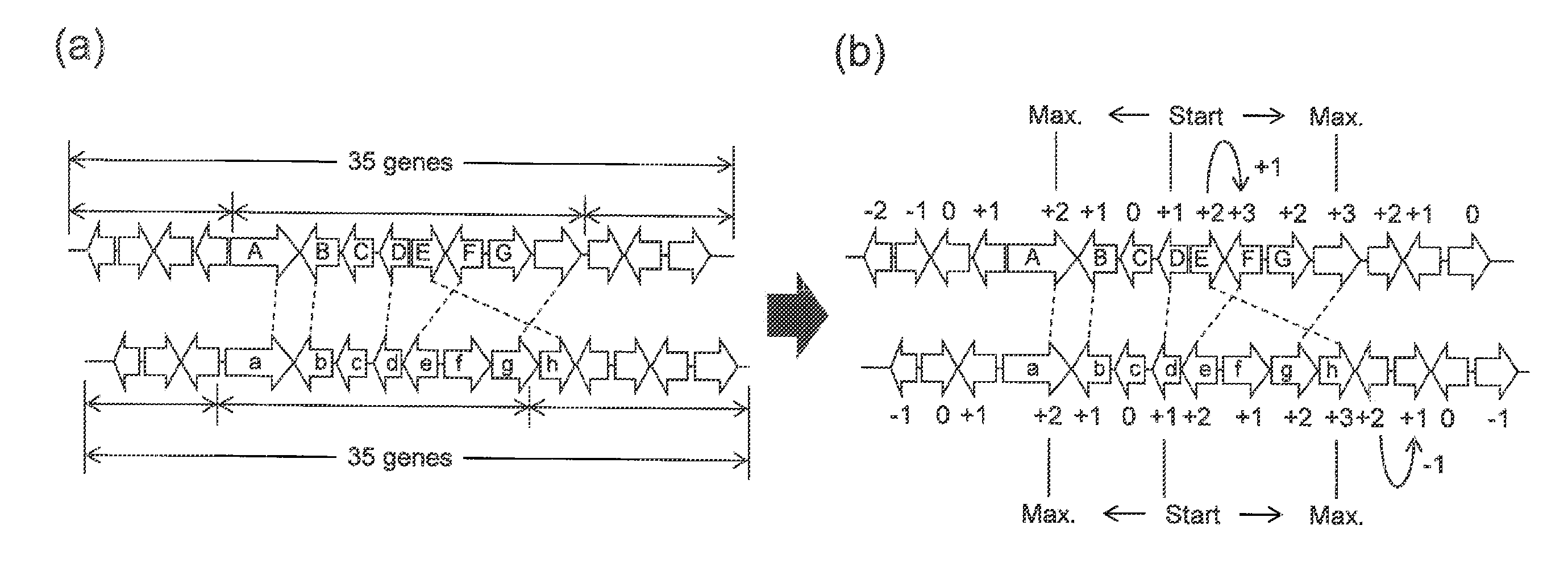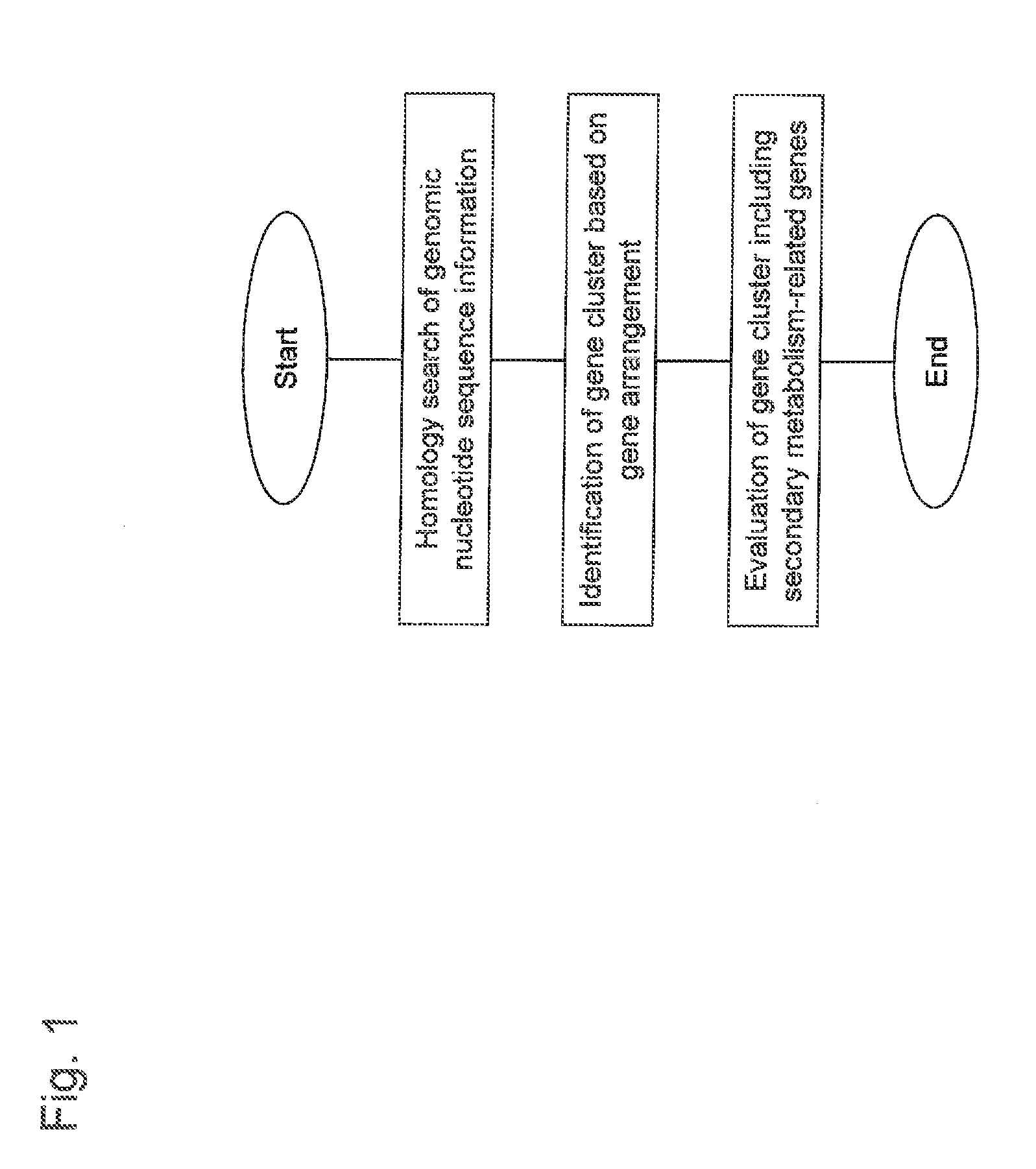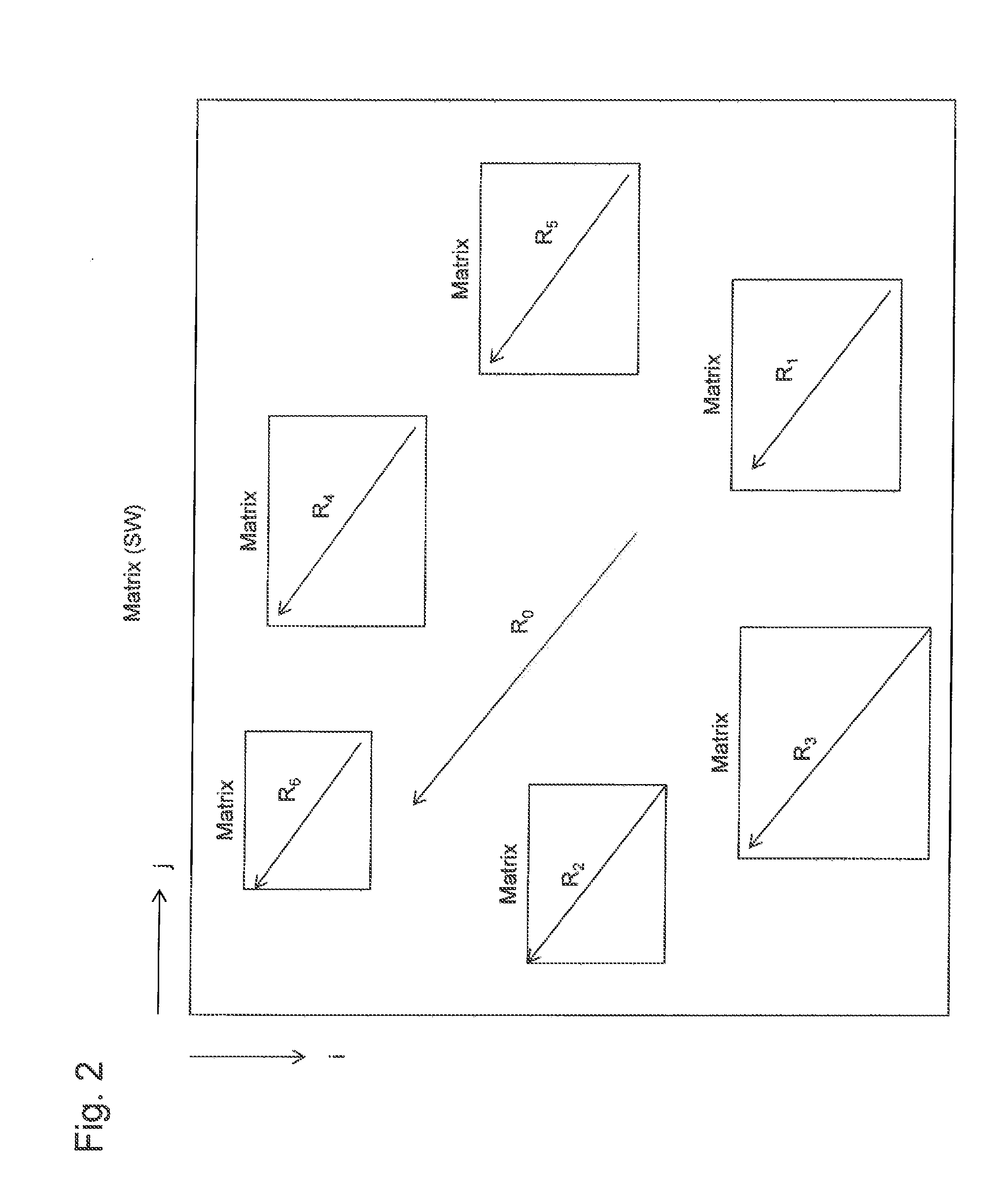Method for predicting gene cluster including secondary metabolism-related genes, prediction program, and prediction device
a technology of secondary metabolism and gene cluster, applied in the field of predicting gene cluster including secondary metabolism-related genes, can solve the problems of difficult to identify secondary metabolism-related genes with high accuracy, difficult to stably produce sufficient amounts, and limited secondary cluster detection by such techniques
- Summary
- Abstract
- Description
- Claims
- Application Information
AI Technical Summary
Benefits of technology
Problems solved by technology
Method used
Image
Examples
example 11
[0078]In Example 1, 8 types of genomic data sets were used. The data of Aspergillus oryzae equivalent to the data registered at GenBank (AP007150-AP007177) were used. The data of Aspergillus flavus downloaded from GenBank in the GenBank file format were used (GenBank Accession NOs: EQ963472 to EQ963493). The data of Aspergillus fumigatas, Aspergillus nidulans, Aspergillus terreus, Magnaporthe grisea, Fusarium graminearum, and Chaetomium globosum were downloaded from the Broad Institute.
[0079]In Example 1, genes exhibiting e-values of 1.0e-10 or less as a result of homology search were designated as homologous genes. In Example 1, also, a pair of genes was designated as a pair of orthologous genes when the genes were listed on the top in the list of the pairs of genes prepared in descending order (i.e., ascending order of e-value) as a result of homology search.
[0080]In Example 1, also, gene arrangement conservation was examined using the Smith-Waterman algorithm, and gene clusters r...
example 2
[0085]In Example 2, gene arrangement conservation was examined using the Smith-Waterman algorithm in the same manner as in Example 1, and gene clusters represented by R0, R′0, R″0 . . . were identified. In Example 2, also, gene clusters including secondary metabolism-related genes were predicted in the same manner as in Example 1 except for the points described below. That is, in a process for modifying the boundary between the identified gene clusters, a score of “+1” was assigned for each gene included in the gene cluster, which had been elongated to contain 35 genes, in the presence of homologous genes, a score of “−0.3” was assigned in the absence of homologous genes, the scores were summed from the center of the elongated gene cluster, and the gene exhibiting the maximal total of the scores was designated as the gene cluster boundary.
[0086]A part of gene clusters including secondary metabolism-related genes predicted in Example 2 are shown in Table 3. As with the case of Exampl...
PUM
 Login to View More
Login to View More Abstract
Description
Claims
Application Information
 Login to View More
Login to View More - R&D
- Intellectual Property
- Life Sciences
- Materials
- Tech Scout
- Unparalleled Data Quality
- Higher Quality Content
- 60% Fewer Hallucinations
Browse by: Latest US Patents, China's latest patents, Technical Efficacy Thesaurus, Application Domain, Technology Topic, Popular Technical Reports.
© 2025 PatSnap. All rights reserved.Legal|Privacy policy|Modern Slavery Act Transparency Statement|Sitemap|About US| Contact US: help@patsnap.com



